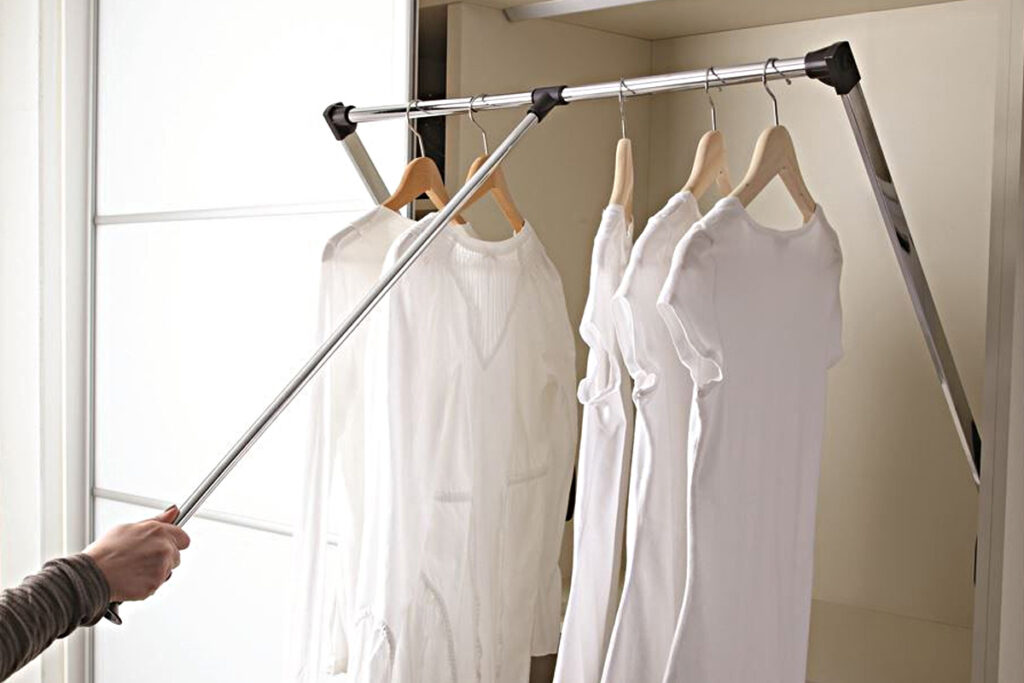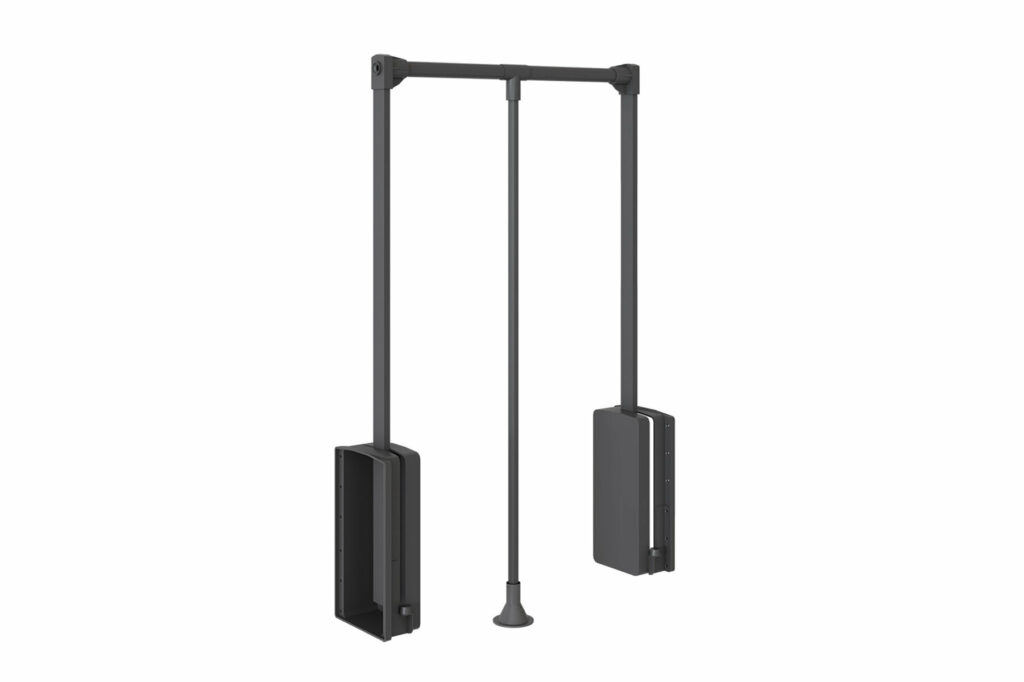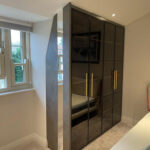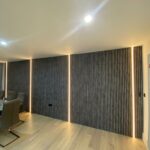A closet pantograph is the secret of ergonomic clothing storage. Types of mechanisms and advice on choosing.
It appears that despite having ample space in the closet, clothes are literally overflowing. Sound familiar? Fortunately, there are specialized accessories designed for convenient and space-efficient storage, and one such valuable tool is a cabinet pantograph.
This mechanism facilitates the storage of clothes on hangers in the often hard-to-reach ceiling area. It can be effortlessly raised or lowered, either manually or with the assistance of an electric drive, allowing for the effective utilization of the entire closet space. This is particularly beneficial for storing infrequently used or seasonal items at higher levels, ensuring even that sweater you plan to wear “one more time” has a designated spot.
Why Opt for a Pantograph? While the design and construction of cabinets are undoubtedly crucial, aligning with aesthetic preferences, needs, and interior style, the focus is increasingly on comfort and functionality. Elements such as bars, shelves, and holders are becoming integral, with the pantograph emerging as a necessity in bringing order to everyday life.
Advantages of a Furniture Pantograph:
- Expanded closet/wardrobe capacity by utilizing the challenging-to-reach ceiling space.
- Straightforward installation, suitable for ready-made furniture.
- Convenient access to perfectly visible items.
- Accommodates clothes of varying lengths, from shirts to dresses and coats.
- Facilitates organized sorting based on seasons or frequency of use.
- A diverse array of models allows for tailored solutions to specific needs.
- Essentially, these serve as accessible and functional upper shelves, ideal for hanging delicate dresses and business suits on the rod. The hanging orientation ensures better ventilation and fewer wrinkles. As seasons change, items not in use for the next few months can find a place on a mobile clothes rack.

Wardrobe Elevator Design: Irrespective of the specific model, it comprises a U-shaped structure where clothes are suspended on shoulders. A handle aids in lowering it to eye level and then raising it to the starting position, eliminating the need for a ladder or chair. Key design components include a sliding bar, control handle, side levers, and boxes with slots for securing the mechanism in the desired position.
Features of Pantographs: When making a purchase, focus on the quality of the material, permissible load, and type of management.
- Manufacturing Material: Accessories are crafted from robust metals such as steel or aluminum. Steel models are more robust, while aluminum models are more budget-friendly. They come in classic versions with chrome coating and various colors to complement your wardrobe.
- Load Capacity: Manufacturers specify the load capacity, typically ranging from 10-20 kg. Consider the number and weight of clothes you plan to store, with larger wardrobes requiring more powerful models. Ensure the chosen width corresponds to the section to be installed.
- Types of Management: Distinguish between mechanical pantographs (manually operated) and those with an electric drive (button-controlled). Electric models offer maximum convenience but come at a higher cost. Mechanical models, with a simple design and handle-pulling operation, are more budget-friendly.

BRAVO Range: Bravo London offers an extensive selection of fillings for sliding door wardrobes, including retractable and hanging baskets, shelves, trouser and tie holders, organizers, and wardrobe elevators. Pantographs from reputable manufacturers like Vibo, Muller, Hafele, and more are available, catering to various widths and colors. All models feature a convenient handle for control, and the website’s filters simplify finding the precise solution.

In conclusion, a wardrobe lift for clothes, such as the pantograph, proves to be an excellent solution for small apartment owners, those who prioritize organization, and anyone valuing comfort and ergonomics. Choose a functional filling for your wardrobe at Bravo London!












